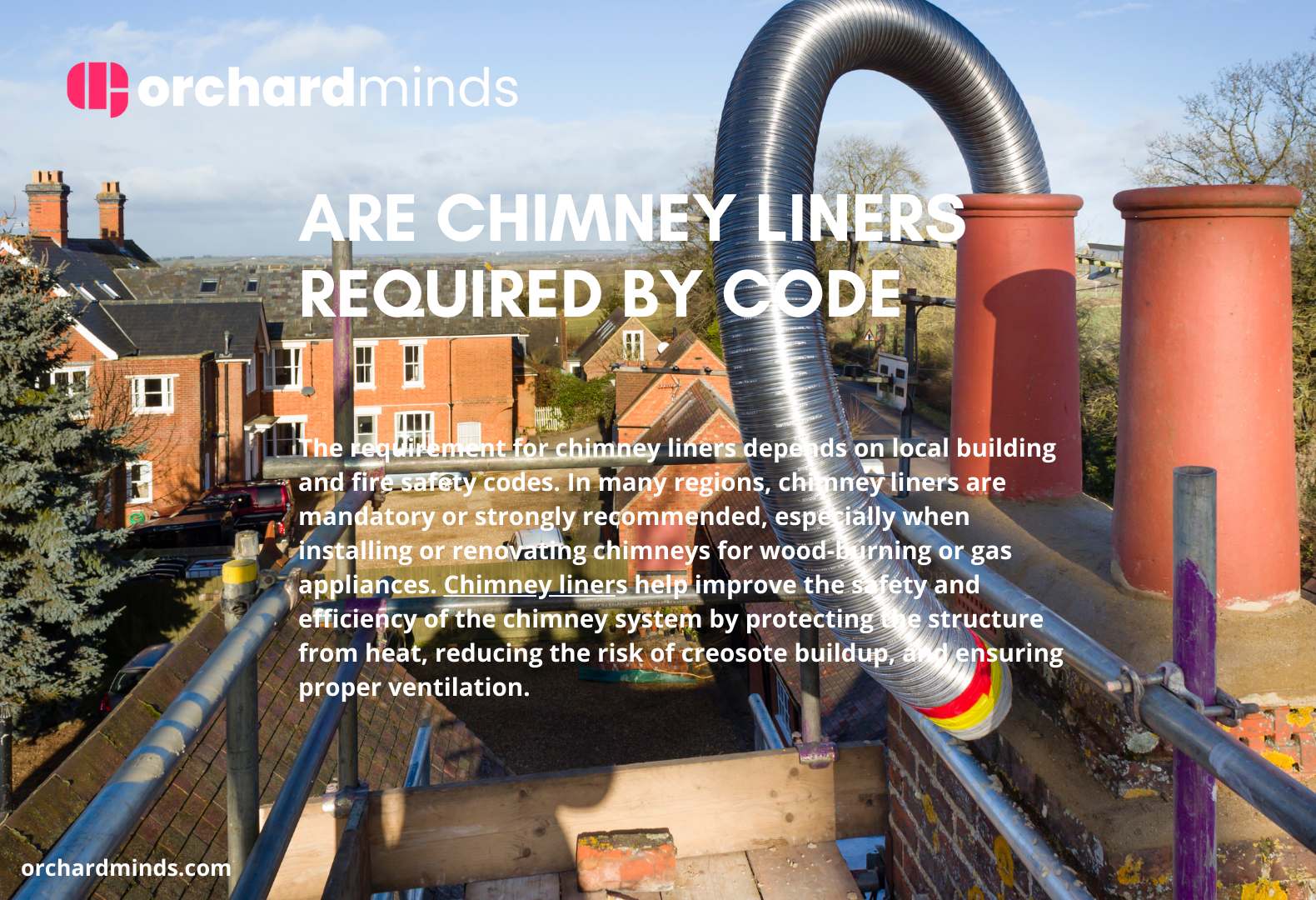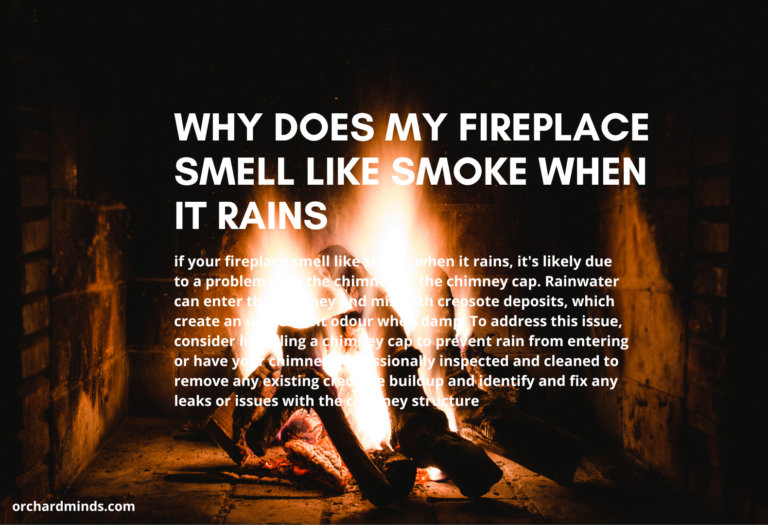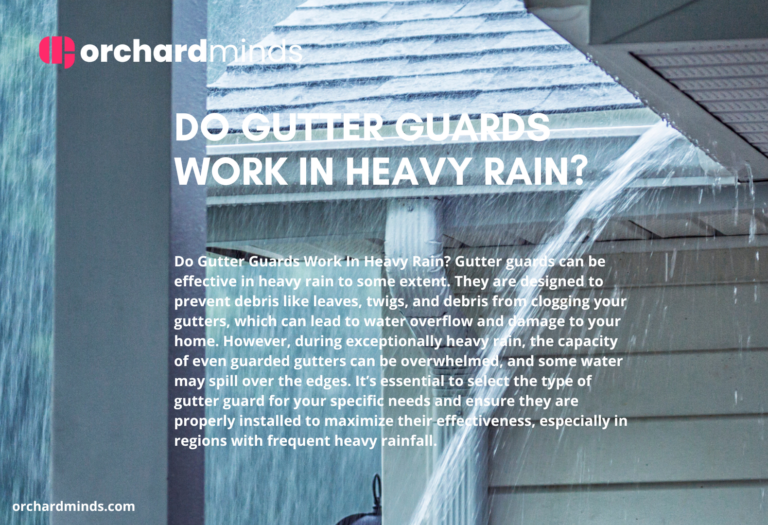Whether chimney liners are required or not depends on the building and fire safety codes of the region where your house is located. Chimney liners are mandated by law, or at least strongly recommended, in most areas when arranging for or doing renovation work on chimneys that will be serving wood-fired or gas appliances. They protect the integrity of the enclosure from heat, minimize potential creosote buildup, and ensure proper ventilation so that the chimney system is much safer and more efficient for work.
Compliance with your local regulations will involve consulting a qualified chimney professional or building inspector to help with the peculiarities of your area’s code compliance.
A Chimney Liner serves the following purposes:
The primary purposes for installing a chimney liner are improvement in safety and efficiency of a chimney system.
Basically, there are some significant features that highlight the importance of this component:
Safety: A flue liner develops a protective barrier between the chimney’s interior and the building structure of the surrounding area. It offers protection from heat transfer to combustibles in the building and reduces the risk of fire.
Improved Draft: Liners can improve draft or airflow through a chimney, ensuring that all combustion byproducts—smoke and gases—are properly vented outside. This becomes very critical to ensure safe operations of appliances such as fireplaces, wood stoves, and furnaces.
Reduced Creosote Buildup: Toilet chimney liners reduce the formation of creosote, which in wood-burning applications is flammable and can be responsible for chimney fires. Liners maintain more constant temperatures and smoother surfaces, discouraging creosote buildup.
Durability: The liners at the inner side of the chimney offer protection against corrosive by-products of combustion, weather elements, hence improving the life.
Efficiency: The inclusion of a properly sized and insulated liner improves the efficiency of a heating appliance. It helps the appliance work more effectively and allows it to consume less energy.
Condensation Prevention: Liners can prevent the formation of condensation within the chimney and hence reduce the resultant moist damage to the chimney structure.
Why You Should Not Use a Chimney Without a Liner
It is extremely not recommended to use chimneys without liners for a variety of reasons, which include:
Safety Hazard: Without a liner, radiating heat from your fireplace, wood stove, or heating appliance is allowed to directly act on the surrounding building materials of the flue passage. This opens up an enormous fire hazard by raising the risk of ignition to nearby wood, insulation, or other combustible parts in the structure.
Creosote Buildup: An unlined chimney will, more specifically, increase creosote buildup in wood-burning applications. Creosote is highly flammable and the result of burning woods or other organic materials. The absence of a liner will mean that temperatures and surfaces in the chimney are irregular, resulting in more instances wherein there will be creosote deposits. This may cause a significant risk of a chimney fire hazard.
Corrosion, Deterioration: Water vapor and acidic byproducts from combustion can corrode a chimney’s masonry or inner structure. A liner will protect this from occurring, basically extending the life expectancy of a chimney by a great deal.
Lack of Draft Control: With no liners, there can be no providing for proper and constant airflow or draft in the chimney flue. Chimneys with no liners tend to vent combustion gases poorly, which may mean poor performance from the appliances with spilling smoke back into the room.
Energy Inefficiency: Liners make the heating applications more efficient. If not, then a chimney that is unlined may well melt down any efficiency for which your heating appliance is rated—thereby wasting energy and increasing the utility bills.
Environmental Concerns: An unlined chimney may allow more pollutants into the environment due to incomplete combustion and poor venting.
Types of Chimney Liners
There are a lot of other types of chimney liners designed particularly for some use or by types of heating appliances, so the type of fuel, appliance, and locale building codes will all help to decide which liner to air towards. Here are the most common types of chimney liners:
Clay Tile Liners
The traditional clay tiles have been more in use.
Working in unison with masonry chimneys, they can be used on the working open-hearth fireplace most classically.
This is not hooked on for appliances with high efficiency and is not used for oil or gas-burning appliances due to the fact that these apparatuses cannot support their corrosive by-products.
Metal (Stainless Steel) Liners
These liners offer almost universal application in all heat appliances available, for example, anvils in steel.
Their resistance to corrosion or high durability makes them very popular items in many wood, gas, oil, and pellet-burning stoves and fireplaces.
Two constructions are available: single-wall and double-wall. A double-wall liner contains a higher rate of insulation and protection.
Cast in Place liners
The liners are made using a special refractory cement mixture, poured directly into the chimney.
They offer a perfect fit and very good heat insulation that is great for both drafts and safety enhancement.
Suited for new chimneys or relining chimneys with existing stacks.
Aluminium Liners:
Aluminum liners are mainly designed for some of the gas appliances.
In addition, they are lightweight, cost low, and are easily installed in different application sites, though not to be used for solid fuel appliances due to slightly less heat resistance.
Hybrid Liner
The durability of stainless steel and the insulation of cast-in-place liners are combined by the Hybrid liner. Such liners prove to be extremely effective and are very frequently used in relining or repairing chimneys.
Ceramic Liners
Ceramic liners are designed to be partnered withappliancesfit for high-temperature gases. They insulate very well and resist well to a great deal of heat.
Polymeric linings
Polypropylene liners ensure the effective efficiency of condensing gas appliances.
They are corrosion-resistant and made for the impeccable application.
Laminated Top Chimney liners
Laminated Top Chimney liners may be corrugated, and prefabricated around flexible for the already existing relining of chimneys, thus particularly those with offsets. Most of the time, it is made of stainless steel, and most of the shapes and sizes are considered the norm. Choose chimney lining only according to your individual needs for the heating appliance, pertinent local building codes, and the fuel being burned in the appliance.
Chimney Liner Installations & Repair
Chimney liner installations and repairs are critical for ensuring the safety and efficiency of your chimney system. A properly installed liner protects your home from fire hazards, minimizes creosote buildup, and improves ventilation. If your existing liner is damaged or deteriorating, timely repairs or replacement are essential to maintain the structural integrity of your chimney. Professional installation and repair services are highly recommended to ensure that your chimney liner is correctly sized, insulated, and in compliance with local building and fire safety codes, promoting a safe and effective venting system for your heating appliances.
FAQs
1. Are chimney liners always required by code?
- Not always. The requirement for chimney liners depends on local building and fire safety codes. Some codes mandate chimney liners for specific heating appliances or fuel types, while others leave it as a recommendation or best practice.
2. What types of heating appliances typically require chimney liners?
- Solid fuel appliances like wood stoves and fireplaces often require chimney liners. Gas and oil-burning appliances may also require liners in certain cases, depending on local regulations.
3. Why do some codes require chimney liners?
- Codes may mandate chimney liners to enhance safety by preventing heat transfer to combustible materials, reducing creosote buildup, and ensuring proper ventilation. Liners also help protect the chimney’s structure from corrosion.
4. Can I install a liner myself, or should I hire a professional?
- It’s generally advisable to have a professional chimney specialist install or inspect your chimney liner. They can ensure it complies with local codes, is the right size, and is installed correctly.
5. Do I need a liner for an existing chimney with no liner?
- Depending on your location and local regulations, you may be required to install a liner if your chimney lacks one. It’s essential to consult local codes and consider the safety and efficiency benefits of adding a liner.
6. Are there specific requirements for liner materials, such as stainless steel or clay tiles?
- Codes may specify the type of liner material based on the heating appliance and fuel used. Stainless steel is a common and versatile choice, but clay tiles and other materials may be appropriate in certain cases.
7. What happens if I don’t comply with chimney liner requirements in my area?
- Non-compliance with local codes can lead to legal issues, difficulties with home insurance, and, most importantly, safety risks. It’s crucial to follow local regulations to ensure a safe and efficient chimney system.
8. Can I use a liner for a gas-burning fireplace or appliance if it’s not required by code?
- Even if not required by code, using a liner for a gas-burning appliance can provide additional safety and efficiency benefits. It’s a wise choice to consult with a professional to determine the best practices for your specific situation.
9. How often should I inspect and maintain my chimney liner?
- Regular inspections and maintenance are essential to ensure the liner’s integrity and performance. The frequency of inspection may vary based on use and local guidelines.
10. Can a damaged liner be repaired, or is replacement necessary?
- It depends on the extent of the damage. Minor issues may be repairable, but significant damage often requires liner replacement for safety and efficiency.




Leave a Comment